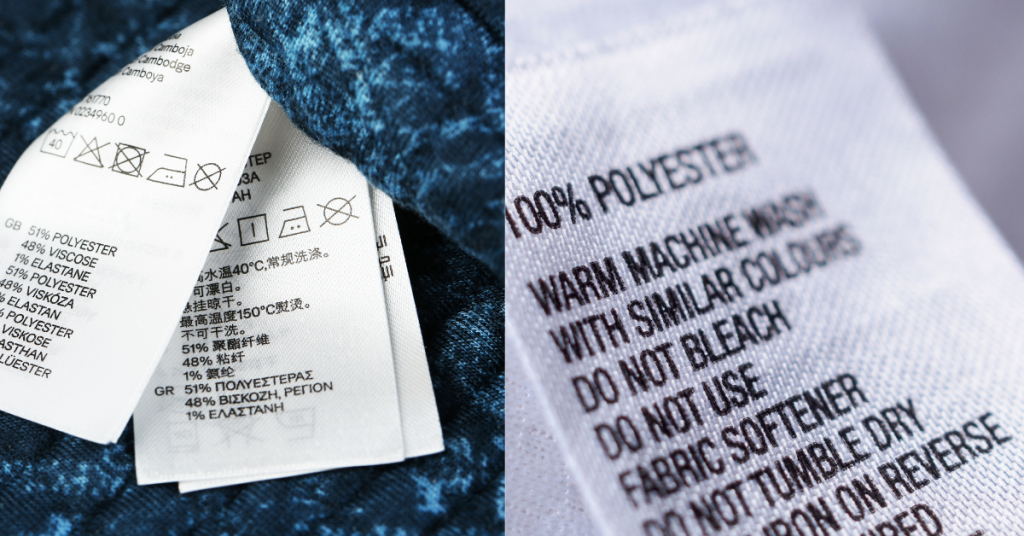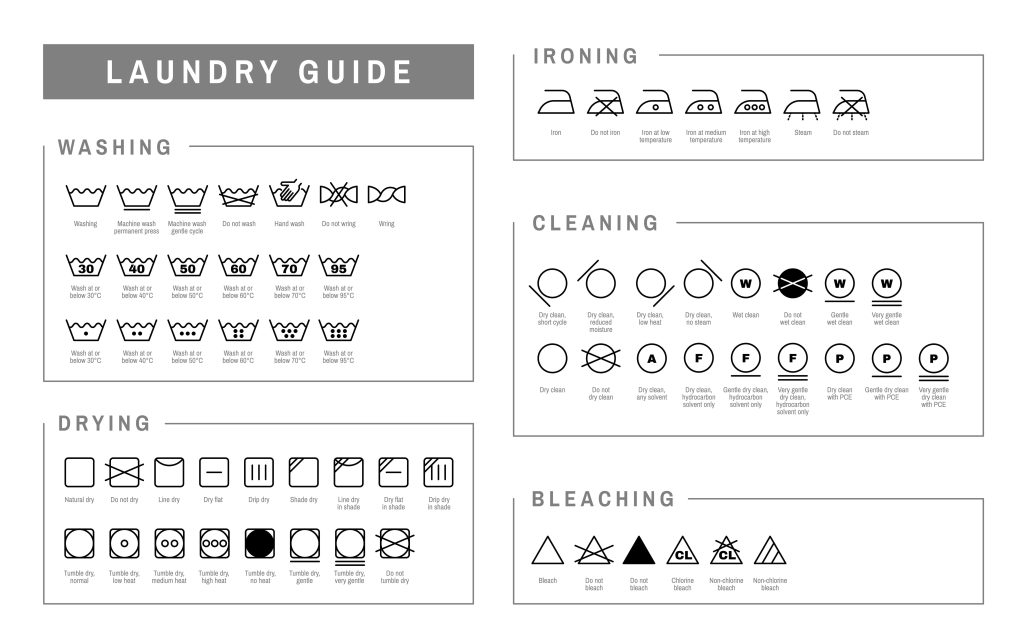How Often Should You Wash Your Gym Clothes? The Truth About Rewearing Activewear

We’ve all been there — you just finished a great workout, tossed your gym clothes in your bag, and thought, “Maybe I can wear this set again tomorrow.”
But should you?
The truth is, gym clothes are not like your regular t-shirts or jeans. They’re designed to absorb sweat and stretch with movement, but that also means they hold onto bacteria and odor more than most fabrics. Let’s break down how often you should wash your gym clothes — and why skipping laundry day might be a bad idea for your skin, hygiene, and even your clothes.
🧘♀️ Why Gym Clothes Need Extra Care
When you work out, your body sweats — a lot. That sweat gets trapped in synthetic fabrics (like polyester or spandex) commonly used in activewear. Combine that with body oils and dead skin cells, and you’ve got the perfect breeding ground for bacteria and odor.
Even if your clothes look clean, they might be harboring invisible buildup that can cause skin irritation, acne, or that familiar “gym smell” that never seems to go away.
That’s why experts recommend washing gym clothes after every workout, especially if they’re tight-fitting or worn directly on the skin.
😷 Health Risks of Rewearing Dirty Gym Clothes
Rewearing unwashed gym clothes isn’t just a little gross — it can also pose risks to your health. According to Healthline experts, bacteria and fungi can linger in sweaty fabrics and lead to several issues such as:
- Body acne and rashes: Sweat, dirt, and bacteria can clog your pores, causing bacne (back acne) and skin irritation.
- Fungal infections: Yeast and fungi thrive in warm, damp fabrics — leading to conditions like ringworm or athlete’s foot.
- Body odor buildup: The longer you leave sweat and bacteria in your clothes, the harder it is to remove the smell later on.
- Bacterial growth: Harmful bacteria like staphylococcus can linger in sweaty fabrics and cause infections if it enters small cuts or scratches.
If you notice your gym clothes still smell even after washing, that’s a sign of bacteria buildup — time for a deep clean or a professional wash.
🏋️♂️ When You Can Rewear Gym Clothes
There are a few exceptions — but only in certain situations:
- Light workouts or yoga: If you did a quick, low-sweat session or just stretched, you can wear it one more time before washing.
- Outer layers: Hoodies or jackets worn over your gym clothes don’t absorb as much sweat, so they can be washed after 2–3 uses.
- Underwear and socks: No exceptions — these should be washed after every use.
But in general, if your gym clothes feel damp, smell musty, or lost their “fresh” feeling — it’s time for laundry.
🧼 How to Properly Wash Gym Clothes
If you want your activewear to last longer and stay odor-free, here’s the best way to wash them:
- Turn them inside out – Most of the sweat and bacteria are on the inside.
- Use cold water – Hot water can break down elastic fibers.
- Avoid fabric softener – It can clog the fabric’s pores and trap odor.
- Air dry when possible – Heat can damage stretch fabrics over time.
- Use a gentle detergent – Look for one designed for sportswear or odor removal.
💡 Pro tip: Soak them in a vinegar-water solution for 15–20 minutes before washing to neutralize sweat odor naturally.
🚴♀️ What If You Don’t Have Time to Wash Right Away?
We get it — sometimes life gets busy. If you can’t wash your gym clothes immediately, don’t leave them crumpled up in your gym bag. Instead:
- Hang them to dry to prevent bacterial growth.
- Store them separately from your clean clothes.
- Schedule a laundry pickup with Clean Avenue so we can take care of it for you!
🧺 Keep It Fresh with Clean Avenue Laundry
At Clean Avenue Laundry, we understand that active New Yorkers are always on the go. Whether you’re a fitness enthusiast, a spin class regular, or just love your daily walks, your gym clothes deserve professional care too.
Our pickup and delivery laundry service makes it easy to keep your workout gear clean, fresh, and ready for your next session — without lifting a finger.
Let us handle the sweat, odor, and hassle for you!.
Skip the stress of laundry day — Clean Avenue Laundry picks up, cleans, folds, and delivers your clothes right to your door anywhere in NYC.
The History of Clothes Dryers: From Sun-Drying to Smart Technology

Before the convenience of modern dryers, doing laundry meant hours of washing by hand and hanging clothes out in the sun. Fast forward to today, and we can dry a full load of laundry in under an hour—all thanks to the incredible evolution of the clothes dryer.
At Clean Avenue Laundry, we love looking back at how far laundry care has come. Here’s a quick journey through the fascinating history of clothes dryers—from simple beginnings to the smart machines we use today.
The History of Clothes Dryers: How It All Began
Before the convenience of modern dryers, people relied on natural sunlight and open air to dry their clothes. The history of clothes dryers dates back to the early 1800s, when inventors began creating hand-cranked machines designed to make drying faster and more efficient. Over the decades, technology advanced from wooden barrels to electric and gas-powered models, shaping how we handle laundry today.
According to Smithsonian Institution archives, early laundry innovations in the mid-19th century reflected the growing desire for convenience and efficiency at home.
The Early Days: When the Sun Did All the Work
For centuries, people relied solely on nature to dry their clothes. After washing by hand in rivers or basins, garments were hung on trees, bushes, or simple clotheslines. This method was free, sustainable, and effective—but entirely dependent on the weather.
Rainy days or humid seasons meant longer drying times and a higher risk of mildew and unpleasant odors. That challenge inspired the first mechanical ideas for indoor drying.
The 18th Century: The Birth of the “Clothes Dryer”
The first known clothes dryer dates back to the 18th century, when a French inventor named Pochon introduced the concept of the “ventilator.” It was a hand-cranked metal drum that used heat from an open fire to dry clothes inside.
It was far from perfect—clothes sometimes came out scorched or filled with smoke—but it sparked the idea that laundry drying could be faster and more efficient.
The 19th Century: Early Innovations in Drying
By the 1800s, inventors began experimenting with safer, more practical indoor dryers. The hand-cranked “ventilating clothes dryer” appeared in 1892, credited to George T. Sampson, an African American inventor from Ohio.
Sampson’s design used heat from a stove to dry clothes in a ventilated drum, and it’s considered the foundation for today’s tumble dryers. His invention made drying possible even in cold or rainy weather—a big step forward for urban households.
The 20th Century: Electric Dryers Revolutionize Laundry
The electric clothes dryer was first introduced in the 1930s, changing the way families did laundry forever.
- 1938: The Hamilton Manufacturing Company released the first electric dryer model.
- 1940s–1950s: As electricity became more widespread, dryers became household staples.
During this time, companies like General Electric and Maytag began developing new designs, adding temperature controls, timers, and automatic shut-off features to prevent over-drying.
By the 1960s, clothes dryers were a must-have appliance in modern homes, offering convenience and saving precious time. Whirlpool Corporation notes that the first automatic dryer rolled off its production line in 1955 — marking a major milestone in laundry technology.
The Modern Era: Gas, Steam, and Smart Dryers
In the late 20th century, dryers evolved rapidly. Gas dryers offered faster drying times, while new electric models became more energy-efficient.
The 21st century brought even more innovation:
- Steam dryers that help reduce wrinkles.
- Moisture sensors that automatically stop when clothes are dry.
- Smart dryers that connect to Wi-Fi, allowing users to control cycles from their phones.
Today, dryers are designed to be gentle on fabrics, energy-efficient, and eco-friendly, proving that laundry care has truly entered the age of technology.
The history of clothes dryers dates back to the early 1800s, when inventors began experimenting with mechanical drying devices to make laundry faster and easier. According to Whirlpool’s official history of the dryer, early models were powered by hand before evolving into electric versions by the early 20th century.
From Innovation to Convenience: Laundry Care Made Simple
The evolution of clothes dryers mirrors one big goal—to make life easier. What used to take hours or even days can now be done effortlessly with the push of a button.
At Clean Avenue Laundry, we embrace that same innovation. Our pickup and delivery laundry service in New York uses modern, energy-efficient machines to clean and dry your clothes with care—saving you time while ensuring your garments come back fresh and perfectly folded.
Final Thoughts
From sun-drying on clotheslines to AI-powered smart dryers, laundry care has come a long way. And while technology keeps improving, one thing remains the same: the desire for clean, fresh clothes with less hassle.
If you’re in New York and need professional laundry service that saves you time and guarantees care for your garments, Clean Avenue Laundry is here for you.
Book your next pickup today at CleanAvenueNYC.com.
🧺 Laundry made easy.
Skip the stress of laundry day — Clean Avenue Laundry picks up, cleans, folds, and delivers your clothes right to your door anywhere in NYC.
How Often Should You Wash Your Pillow (and How to Do It Properly)

When was the last time you washed your pillow — not just the pillowcase, but the pillow itself?
If you can’t remember, you’re not alone. Most people wash their pillowcases every week but forget that the actual pillow also needs cleaning. Over time, pillows collect dust mites, sweat, oils, and bacteria that can cause odors and even skin irritation.
Keeping your pillow clean isn’t just about hygiene — it also helps you sleep better and keeps your pillow lasting longer. So, how often should you wash your pillow, and what’s the right way to do it?
How Often Should You Wash Your Pillow?
Experts recommend washing your pillows every 3 to 6 months. This helps remove buildup from body oils, drool, and dust that accumulate over time.
However, the frequency can vary depending on your situation:
- 💤 If you have allergies: Wash your pillow every 1–2 months to prevent dust mite buildup.
- 🌡️ In hot or humid climates: Wash more often to keep bacteria and odors away.
- 🏨 For guest room pillows: Every 6 months is enough if they’re not used often.
And don’t forget — while your pillow can go months between washes, your pillowcases should be washed weekly since they’re in direct contact with your skin and hair.
Signs It’s Time to Wash or Replace Your Pillow
Not sure if it’s time for a wash? Watch out for these signs:
- Yellow stains or musty smell
- Your pillow feels flat or lumpy
- You wake up sneezing or with itchy eyes
- It doesn’t spring back when folded in half
If your pillow fails the “fold test” (it stays folded instead of bouncing back), it’s a sign that it may be time to replace it altogether.
How to Wash Different Types of Pillows
Before you start cleaning, always check the care label — some pillows can be machine washed, while others need special care.
1. Down or Feather Pillows
- Wash two at a time to balance the load.
- Use a gentle detergent and cold or warm water on the delicate cycle.
- Rinse twice to remove all soap.
- Tumble dry on low with dryer balls or clean tennis balls to restore fluffiness.
2. Memory Foam Pillows
- Never put them in the washing machine.
- Spot clean with mild detergent and water.
- Let them air dry completely before use to prevent mold growth.
3. Synthetic (Polyester) Pillows
- Machine washable on warm or cold.
- Use a mild detergent and rinse thoroughly.
- Dry completely on low heat — moisture can cause mildew.
Extra Pillow Care Tips
Keep your pillows fresh longer with these simple steps:
- Use a pillow protector under your pillowcase to block sweat and dust.
- Air out your pillow in sunlight once a month to kill bacteria naturally.
- Replace pillows every 1–2 years for best comfort and hygiene.
Related Reading: Wash and Fold Services in NYC
If you’d rather leave the heavy laundry to the pros, our Wash and Fold Services in NYC might be just what you need.
We handle everything — from clothes and bedding to bulky items like pillows — so you can save time and enjoy a fresh, clean home without the hassle.
Professional Pillow Cleaning Made Easy
If you’re unsure how to wash your pillow safely — or just don’t have time — Clean Avenue can help. We handle bulky and delicate laundry items with expert care, from comforters and duvets to pillows.
🧺 Schedule a pickup and let us handle the cleaning for you — so you can rest easy on a fresh, fluffy pillow every night.
👉 Book your laundry pickup now at CleanAvenueNYC.com.
🧺 Laundry made easy.
Skip the stress of laundry day — Clean Avenue Laundry picks up, cleans, folds, and delivers your clothes right to your door anywhere in NYC.
Can You Dry Clean Stuffed Toys? Here’s What You Need to Know

Dry cleaning stuffed toys is a safe and effective way to keep your favorite plush items fresh and germ-free. Stuffed toys aren’t just toys — they’re comfort items, childhood companions, and sometimes even collectible treasures. But over time, these cuddly friends collect dust, dirt, and bacteria, especially if they’re frequently hugged, played with, or shared between kids and pets.
The challenge? Many stuffed toys aren’t meant for machine washing. Some have delicate fabrics, glued-on parts, or electronic components inside that could get damaged in water. So, if you’re wondering whether you can dry clean stuffed toys, the answer is yes — and it’s often the safest choice.
If you’re curious about what actually happens during the dry cleaning process, check out our guide on how the dry cleaning process really works.
Why Dry Cleaning Stuffed Toys Makes Sense
Dry cleaning isn’t just for clothes — it’s also ideal for plush items made of delicate materials or filled with components that shouldn’t be soaked. Here’s why it works so well:
- Gentle cleaning process: Unlike water-based washing, dry cleaning uses special solvents that lift dirt and stains without soaking the toy.
- Preserves fabric and shape: No twisting, wringing, or shrinking — perfect for toys that easily lose their fluff or form.
- Safe for delicate details: Embroidered eyes, sequins, buttons, and small accessories remain intact.
- Removes odors and germs: Dry cleaning can sanitize and deodorize plush toys that have absorbed smells over time.
For parents or collectors, dry cleaning helps preserve both the cleanliness and sentimental value of their stuffed toys. Want to know which fabrics are better suited for washing versus dry cleaning? Read our guide on choosing between dry cleaning and washing.
How the Dry Cleaning Process Works for Stuffed Toys
Curious about what happens when your stuffed toy goes to a professional cleaner? Here’s what typically happens:
- Inspection: The toy is checked for loose seams, stains, and fragile parts. Cleaners review the care label to confirm if it’s safe for dry cleaning.
- Spot Treatment: Visible stains are pre-treated using gentle, fabric-safe solutions.
- Dry Cleaning: The toy goes through a solvent-based cleaning process that removes dirt, oils, and bacteria — all without water.
- Air Drying & Fluffing: After cleaning, the toy is air-dried and gently brushed or fluffed to restore its softness and shape.
- Final Check: Before returning it to you, the cleaner inspects the toy again to ensure it’s clean, odor-free, and ready for more cuddles.
For more insights into specialty dry cleaning, check out Can You Get Same Day Dry Cleaning?.
When Should You Dry Clean a Stuffed Toy?
You don’t need to bring stuffed toys for dry cleaning every time. However, it’s worth doing when:
- The toy is made of delicate or vintage fabric
- It has sound or mechanical components inside
- It’s too large or fragile for handwashing
- It’s a sentimental or collectible item
- It’s been stored for a long time and smells musty
These situations call for professional care to prevent damage and preserve the toy’s value.
Tips for Maintaining Stuffed Toys at Home
Between professional cleanings, here’s how to keep plush toys in good shape:
- Dust regularly using a soft brush or vacuum attachment.
- Use fabric-safe disinfectant sprays for freshness.
- Keep toys dry to prevent mildew and odors.
- Store in a cool, clean space when not in use.
These small habits extend your toys’ life and reduce the need for frequent deep cleaning. For more garment care tips, explore How Much Does Dry Cleaning Cost in NYC?.
Expert Toy Care with Clean Avenue NYC
Stuffed toys hold more than just stuffing — they hold memories, comfort, and smiles. Whether it’s your child’s bedtime buddy or a collector’s vintage bear, dry cleaning is one of the safest and most effective ways to keep plush toys fresh and clean.
At Clean Avenue, we handle delicate items like stuffed toys with care, using gentle methods that restore softness while keeping them safe for snuggles.
🧺 Schedule your pickup today and let us bring your favorite stuffed companions back to life — clean, fluffy, and ready for more hugs.
Let us help bring your favorite stuffed companions back to life 🧸
At Clean Avenue, we handle delicate items like stuffed toys with extra care, using gentle cleaning methods that restore their softness while keeping them safe for snuggles.
Industrial Revolution: Birth of Public Laundries

The Industrial Revolution was a period of profound transformation in the 18th and 19th centuries. While it is often celebrated for mechanizing industry and reshaping urban life, it also revolutionized domestic tasks—most notably, laundry. As cities grew and the pace of life quickened, traditional methods of washing clothes by hand became increasingly impractical. This era gave birth to public laundries, a solution that laid the foundation for modern laundry services.
Urban Growth and Laundry Challenges
The rapid urbanization during the Industrial Revolution brought together large populations in concentrated city spaces. Families were larger, workers had uniforms and workwear, and homes often lacked domestic help or sufficient space to handle large laundry loads. Washing clothes became a daily struggle, requiring hours of labor-intensive scrubbing, soaking, boiling, and drying.
Public laundries emerged as a practical solution. These establishments offered residents a place to wash, rinse, and press clothes using communal facilities. For many, this service provided not only convenience but also a sense of reliability. Households could trust that their garments would be properly cleaned and returned on time.
Learn more about the history of laundry services
Technological Innovations
The Industrial Revolution introduced a wave of innovations that transformed laundry practices. Steam engines, large boilers, and mechanized wringers allowed public laundries to process significantly larger volumes of laundry than ever before. Previously, laundry required physical labor that often spanned the entire day; now, machines could complete the work in a fraction of the time.
Ironing also saw a technological leap. Steam-powered irons and presses ensured clothes were neatly finished, making public laundries a one-stop solution for households who sought both cleanliness and presentation. These early advances established a standard for efficiency, cleanliness, and reliability—principles still central to modern commercial laundry services.
Check out our modern laundry services
📚 Learn More About the Evolution of Public Laundries
Discover how public washhouses, known as lavoirs, played a crucial role in 18th-century France, not just for laundry but also as community hubs. This article delves into their significance and transformation over time.
🔗 Lavoirs: The History of French Wash-houses
Social and Economic Impact
Public laundries had a notable impact on society. They created employment opportunities, particularly for women, who worked as washers, ironers, and attendants. They also became community hubs where people could socialize, exchange news, and build connections while waiting for their laundry.
Economically, public laundries introduced the idea of paying for convenience. People could outsource laborious chores, freeing time for work or leisure. This shift was significant: it normalized the notion of hiring services for everyday tasks, a concept that continues to influence service industries today.
Legacy and Modern Relevance
The legacy of public laundries extends into modern services like Clean Avenue Laundry. Today’s laundry solutions, from pickup-and-delivery services to self-service laundromats, are built on the same principles of efficiency, reliability, and convenience. Busy households and businesses no longer need to spend hours handling laundry. Instead, services like Clean Avenue ensure clothes are professionally cleaned and returned promptly, preserving both time and quality of life.
Furthermore, the tradition of innovation continues. Modern laundry companies now use advanced machines, eco-friendly detergents, and streamlined logistics to enhance customer experience, reflecting the spirit of efficiency first introduced during the Industrial Revolution.
Takeaway
Next time you schedule a laundry pickup, remember that this convenience has deep roots in history. Public laundries solved the challenges of urban living during the Industrial Revolution, and today, modern services like Clean Avenue continue that legacy—providing fast, reliable, and accessible laundry solutions for everyone.
Don’t spend hours on laundry—let Clean Avenue handle it! Book your pickup today and enjoy professional, stress-free laundry service delivered to your door.
Join the modern laundry revolution!
From public laundries to modern convenience—experience hassle-free laundry today with Clean Avenue! Book your pickup now.”
The Best Way to Wash Bedsheets, Towels, and Blankets
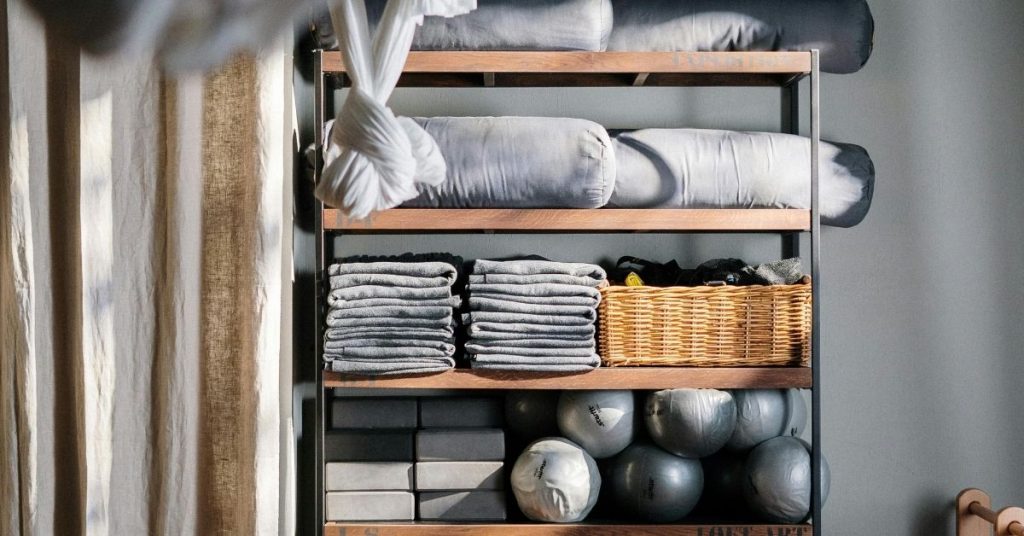
When it comes to laundry, some of the trickiest items to wash are the ones we use every day — bedsheets, towels, and blankets. They’re bulky, heavy when wet, and require the right washing method to stay soft, clean, and long-lasting.
If you live in New York City, you probably know the struggle: small washing machines, limited space, and not enough time. That’s why we’ve put together this simple guide on how to wash bedsheets, towels, and blankets properly — and how Clean Avenue Laundry can make your life a whole lot easier.
How Often Should You Wash Them?
Bedsheets – Every 1–2 weeks. Even if they look clean, sweat, skin oils, and dust mites can build up quickly.
Towels – Every 3–4 uses. Towels trap moisture and can harbor bacteria and odor if not washed regularly.
Blankets – Every 2–3 months, or more often if used daily. Heavier blankets can accumulate dust and sweat without you noticing.
Keeping a regular washing schedule helps prevent odor and keeps fabrics fresh and hygienic.
How to Wash Bedsheets Properly
- Sort by color and fabric type. Wash whites separately from colors to avoid discoloration.
- Use gentle detergent. A mild detergent keeps your sheets soft and prevents fabric damage.
- Avoid overloading the washer. Sheets need enough room to move around for a thorough clean.
- Use warm water. Hot water can damage fibers over time, especially on delicate materials like cotton sateen.
- Dry completely. Remove sheets promptly after drying to prevent wrinkles and mildew.
🧺 Pro tip: For silk or high-thread-count sheets, consider professional cleaning for better results.
According to the Sleep Foundation, washing your sheets at least once per week helps maintain freshness, reduce allergens, and promote better sleep quality.
🧖♀️ How to Wash Towels
Towels need special care to stay fluffy and absorbent:
- Don’t use too much fabric softener. It can coat the fibers, reducing absorbency.
- Wash in warm water. It helps remove oil and buildup without damaging the fabric.
- Add vinegar occasionally. A half cup of white vinegar during the rinse cycle removes detergent residue and odors.
- Dry completely. Damp towels can develop a musty smell, so make sure they’re fully dry before folding.
🧺 Quick fix: If your towels start to smell even after washing, try a “deep clean” with vinegar and baking soda — no detergent needed.
How to Wash Blankets
Blankets come in different materials, so always check the care label first.
- Machine-washable blankets: Use cold or warm water and a gentle cycle. Avoid bleach or fabric softener.
- Heavy or oversized blankets: These may not fit in a regular washer — best to bring them to a professional laundry service.
- Dry completely. Use low heat or air dry. Damp spots can lead to mildew or odor.
🧺 Pro tip: For weighted blankets, check the label — some covers can be machine-washed separately, but the inner blanket might need professional care.
Washing Tips for Allergy Prevention
If you or anyone in your household suffers from allergies or sensitive skin, proper washing can make a big difference. Dust mites and allergens tend to accumulate on bedsheets, blankets, and towels over time — especially in humid environments.
To help reduce these triggers:
- Wash your sheets and pillowcases at least once a week.
- Use hot water (130°F or 54°C) to kill dust mites and bacteria effectively.
- Dry items completely before storing to prevent mold and mildew.
- Consider using a hypoallergenic detergent for extra protection.
According to the Mayo Clinic, washing your bedding in water at 130°F (54°C) or higher is an effective way to eliminate dust mites and common allergens that may cause sneezing or irritation.
Let Clean Avenue Handle the Heavy Loads
Washing large items like sheets, towels, and blankets can be time-consuming — especially in NYC apartments with limited washer space. That’s where Clean Avenue Laundry comes in.
We offer pickup and delivery laundry service across New York City, so you can enjoy fresh, professionally cleaned laundry without lifting a finger. Whether it’s your weekly wash or bulky bedding, we’ll handle it with care and return it neatly folded and ready to use.
✨ Schedule your next pickup today at CleanAvenueNYC.com and let us take care of the heavy loads for you.
Final Thoughts
Keeping your bedsheets, towels, and blankets clean doesn’t have to be a chore. With the right washing methods — or a little help from Clean Avenue — you can enjoy soft, fresh, and hygienic fabrics every time.
Let Clean Avenue handle the Heavy loads 🖤
We offer pickup and delivery laundry service across New York City, so you can enjoy fresh, professionally cleaned laundry without lifting a finger.
Ancient Laundry: Soapwort, Ashes & Early Detergents
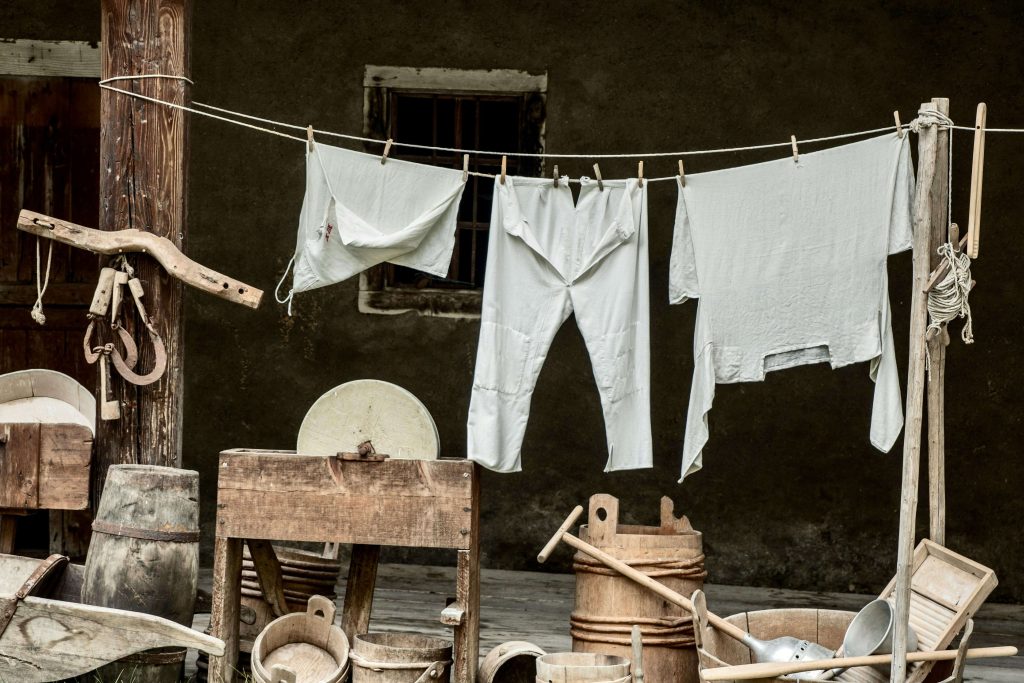
Laundry might feel like a modern chore, with fancy detergents, washing machines, and professional services, but did you know that people have been cleaning their clothes for thousands of years? Long before Tide pods or professional laundry services existed, ancient civilizations relied on natural ingredients and clever techniques to keep their garments fresh and wearable.
Soapwort: The Gentle Cleaner
One of the most interesting ancient laundry ingredients is soapwort. A flowering plant native to Europe and Asia, soapwort contains natural saponins — compounds that produce a gentle, foamy lather when mixed with water. Because of this, it became the go-to cleanser for delicate fabrics like silk and wool.
Laundry with soapwort wasn’t just about cleanliness. The foaming action helped lift dirt while remaining gentle on fragile fibers, which meant that valuable or heirloom garments could be washed without fear of damage. In many households, boiling soapwort in water and soaking fabrics in it was a routine part of laundry day.
Ashes and Lye: For Tough Stains
Not every fabric could be washed with delicate soapwort. For heavier fabrics like wool, linen, and cotton, ancient laundresses turned to ashes. When mixed with water, ashes create lye, a strong alkaline solution capable of breaking down grease and stubborn stains.
Lye might sound intimidating today, but in the past, it was considered a powerful and effective cleaning agent. People often collected wood ashes from hearths or fireplaces, soaking garments in lye water for hours before rinsing them clean. This method was especially common in Northern Europe, where colder climates made traditional laundering more challenging.
Other Early Detergents
Beyond soapwort and ashes, ancient cultures experimented with a variety of cleaning solutions. The Romans, for instance, used urine as a source of ammonia to clean and whiten togas. In medieval Europe, vinegar and fuller’s earth (a type of clay) were commonly used to remove stains and odors.
In Asia, fermented solutions made from plant extracts and rice water were often employed to clean clothes. While some of these methods may sound unusual or even unpleasant today, they were the best tools available for keeping clothes hygienic and wearable.
Lessons from Ancient Laundry
While we no longer need to collect ashes or soak garments in soapwort, there are lessons to be learned from ancient laundry practices:
- Choose the right cleaning method for the fabric – Delicate items need gentle care, while heavier fabrics require stronger cleaning agents.
- Be patient – Ancient laundresses understood that effective cleaning took time. Modern machines save us time, but the principle of thorough washing still applies.
- Rinse thoroughly – Ancient methods emphasized rinsing after every wash to remove residual cleaning agents, ensuring garments were soft and safe to wear.
Bringing Ancient Wisdom to Modern Laundry
At Clean Avenue, we combine the wisdom of the past with the convenience and safety of modern technology. From delicate silk blouses to everyday cotton shirts, our professional laundry services ensure that every garment receives the care it deserves.
We use high-quality detergents and fabric-friendly processes that mimic the principles of ancient laundry: gentle on fabrics but effective at removing stains. And with our pickup and delivery service, you don’t need to spend hours scrubbing — we handle the heavy lifting for you.
Experience the Difference
Your clothes deserve more than a quick wash. They deserve care, attention, and the kind of cleaning that ancient laundresses would recognize as proper and thorough. Let us take the hassle out of laundry while keeping your garments in pristine condition.
Ready to experience professional laundry services in NYC? Schedule your pickup and delivery today and enjoy fresh, perfectly cleaned clothes without leaving your home.
Ready to experience professional laundry services in NYC? 🖤
Let us take the hassle out of laundry while keeping your garments in pristine condition.
How Often to Wash Denim: A Complete Guide
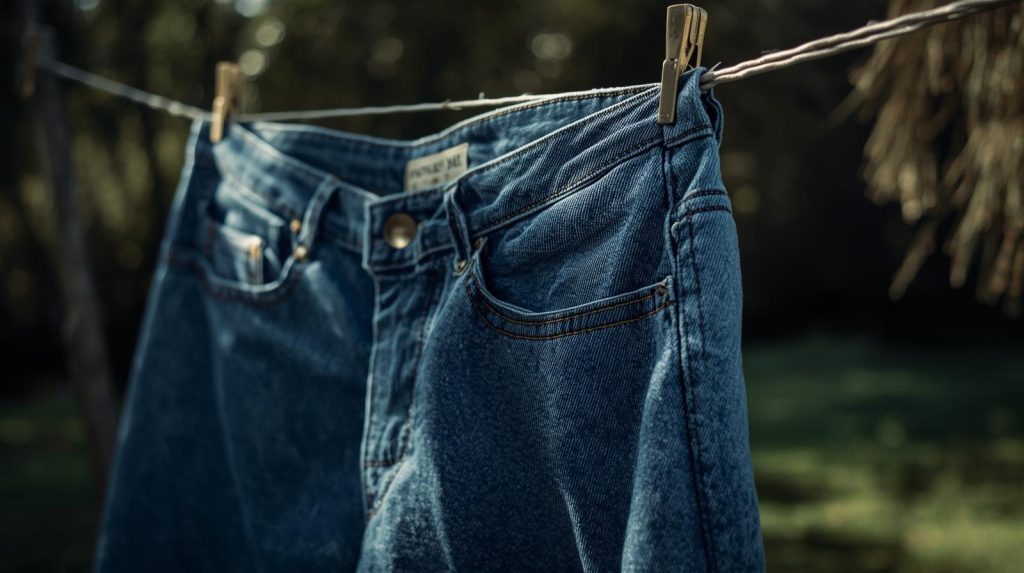
When it comes to laundry, one of the most common questions people ask is: how often to wash denim? Some people clean their jeans after every wear, while others avoid washing them for months. The truth lies somewhere in between—washing denim too often can cause fading and damage, but leaving it too long isn’t ideal either.
In this guide, we’ll explore expert advice, care tips, and alternatives so you know exactly how often to wash denim without compromising its style or durability.
Why Denim Doesn’t Need Frequent Washing
Unlike lightweight fabrics, denim is thick, durable, and naturally resistant to odor. Washing too often can actually do more harm than good, leading to:
- Color fading – especially in dark or raw denim.
- Fabric weakening – repeated washes break down the fibers.
- Loss of fit – denim shapes to your body, but washing resets that fit.
Even denim brands like Levi’s recommend washing denim sparingly to extend its life.
How Often to Wash Denim: Practical Guidelines
There’s no single rule that applies to everyone, but here’s a helpful guide based on your lifestyle:
- Every 3–10 wears – for casual use such as errands, commuting, or working from home.
- After 1–2 wears – if exposed to sweat, dirt, smoke, or spills.
- Once a month – if worn occasionally and still looks/smells fine.
- Spot clean when needed – remove small stains with a damp cloth instead of a full wash.
Raw Denim: Special Washing Rules
If you own raw or selvedge denim, care is different. Many denim enthusiasts recommend waiting at least 6 months before the first wash so the jeans develop natural fade patterns unique to your body. After that, wash sparingly to preserve the look.
The Best Way to Wash Denim
When it’s finally time to wash denim, follow these steps to keep it looking great:
- Turn inside out – reduces fading and friction.
- Use cold water – prevents shrinking and color loss.
- Mild detergent only – protects fabric fibers.
- Air dry – avoid the dryer to maintain fit and quality.
For expensive or delicate denim, consider professional care. (See our guide on choosing between dry cleaning and washing).
Alternatives to Washing Denim
You don’t always need a full wash cycle. Try these instead:
- Air out overnight – hang outside or in a ventilated room.
- Fabric refresher sprays – neutralize odors.
- Freezer method – placing jeans in the freezer overnight can kill bacteria and freshen them up (though temporary).
Finding the Balance
So, how often to wash denim? The answer depends on how you wear it. A good rule of thumb: wash when they look dirty, smell, or feel uncomfortable. Otherwise, spot cleaning and airing out can extend the time between washes and make your jeans last longer.
Keep Your Denim Fresh with Clean Avenue
At Clean Avenue, we understand how to handle denim with care. Whether it’s your favorite everyday jeans or raw selvedge denim, our wash & fold laundry service ensures gentle cleaning that preserves color, fabric, and fit.
Premium Denim & Laundry Care for New Yorkers 🖤
Denim requires a special touch—too much washing can cause fading, while the wrong care can ruin the fit. At Clean Avenue, we provide expert wash & fold and dry cleaning services that protect the quality, color, and shape of your favorite jeans. Luxury care, delivered straight to your door.
